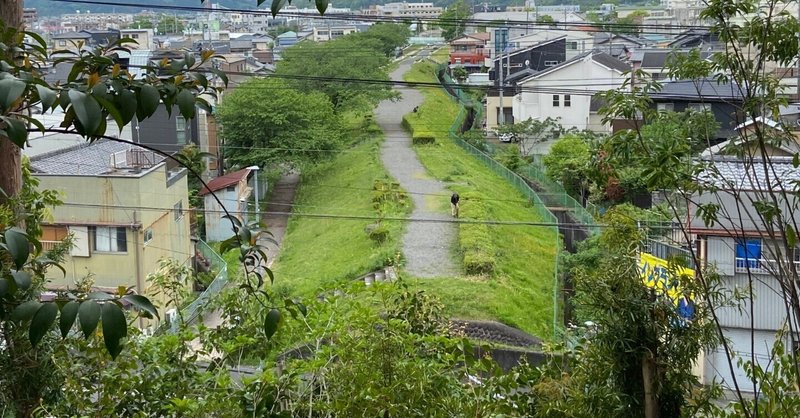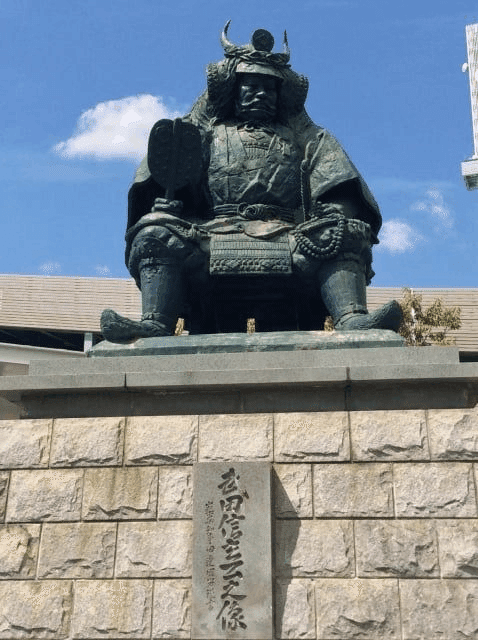
【~連載~静岡の歴史を学ぼう128】Sumpu Okakoi Tsutsumi Part2 駿府御囲堤 パート2
※ この記事は「静岡移住計画Facebook」に掲載しております。
徳川家康公はその進んだ堤防の建設については甲斐の武田信玄に倣ったと考えられています。
(Sumpu Okakoi Tsutsumi Part1 駿府御囲堤パート1)
Sumpu Okakoi Tsutsumi Part2
駿府御囲堤 パート2
Moreover, the big-scale levee contributed to the protection of Sumpu Castle and the city against flooding.
さらに、大規模な堤防は駿府城とその城下を洪水から守ることに貢献しました。
Sumpu Okakoi Tsutsumi was a significant infrastructure because it functioned both as flood control and military defense for Sumpu Castle.
駿府御囲堤は洪水対策だけでなく、駿府城の軍事防衛としても機能したため、重要な社会基盤でした。

The shape of the levee (V formation) was copied from the ‘Shingen Embankment’, which was constructed by Takeda Shingen, a famous Sengoku daimyo in Kai province (the present-day Yamanashi prefecture).
その堤防の形(V型)は「信玄堤」を模倣したもので、それは甲斐(現在の山梨県)の有名な戦国大名、武田信玄により建設されました。
Takeda Shingen utilized the V-formation shape to allow the stream to flow efficiently while protecting the riverbank.
武田信玄はその堤のV型を活用し、堤防を守る一方、効率よく川の水を流すようにしました。

The space between the banks held huge volumes of water, so they served as reservoirs as well.
堤防の間のスペースに多量の水を溜めていました。ですから貯水池としても役目を果たしていました。
These reservoirs slowed down the rapid streams, so the embankment itself was protected from eroding.
そのスペースに水が溜まることで急流の流れが緩やかになりました。ですから堤自体が侵食されずにすみました。
If the outer embankments collapsed, the inner embankments would keep and protect the area along the riverbank.
もし外側の堤防が壊れても、内側の堤防が保たれて、堤沿いの地区が守られます。
On the other hand, when the water level receded, the water in the reservoir would flow into the main stream.
その一方、川の水位が下がれば、溜まっていた水は川の主流に流れていきます。

In case the Sumpu Castle was attacked, the levee could be brought down to flood the city and hamper the attackers.
もし駿府城が攻撃された場合、その堤防を切ることで、街に洪水をおこして、敵を水攻めにすることが可能でした。
Tokugawa Ieyasu saw for himself the Shingen embankment in Kai province before, and he imitated the design and brought it to Sumpu.
徳川家康自ら、以前に甲斐で信玄堤を見て、その設計を模倣し、駿府に持ち込んだのでした。
Okubo Nagayasu, a famously skilled servant of the Takeda clan who was involved in constructing the Shingen embankment, allegedly joined the construction of the levee in Sumpu.
大久保長安は武田家に仕え、よく知られた腕のある家来で、信玄堤の建設に携わっていました。この駿府の堤の建設に関わっていると言われています。

Takeda Shingen (the famous daimyo in Kai province) appreciated Okubo Nagayasu because of his high expertise in castle building, mining, civil engineering, and soil and water conservation.
武田信玄(有名な甲斐の大名)は大久保長安を重用しました。大久保には城づくり、採掘、土木工事、治水に関して高い専門技術があったからです。

Tokugawa Ieyasu also thought highly of Okubo Nagayasu's talent and appointed him as a special servant.
徳川家康も大久保長安の才能を高く評価し、彼を重臣として任命しました。
At that time, Okubo Nagayasu had already discovered numerous gold-bearing veins in Umegashima in the upper area of the Abe River, and gold mining started there.
当時、大久保長安はすでに安倍川上流にある梅ヶ島で多くの金脈を発見し、そこで金採掘を始めていました。
It is believed that Tokugawa Ieyasu effectively used Okubo’s civil engineering ability to build a cutting-edge levee.
徳川家康は最先端の堤を造るため、大久保の土木技術の才能を効果的に活用したと考えられています。
参考文献:東海道駿府城下町(上)――― 東海道中核都市の誕生
建設省静岡国道工事事務所 企画・監修
社団法人 中部建設協会 編集・発行

駿府御囲堤の近く、井宮小学校のわきを安倍川からの用水が今も流れています。
この記事が気に入ったらサポートをしてみませんか?
